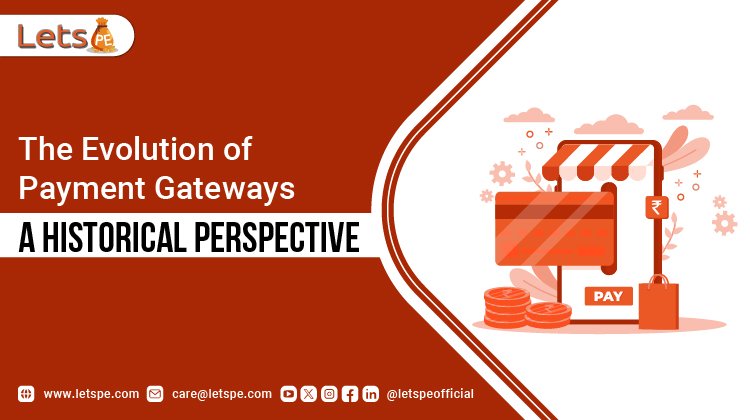The Evolution of Payment Gateways: A Historical Perspective

In moment’s digital age, the process of making payments has changed dramatically. The entry of online payment gateways has revolutionised the way we make transactions, bridging the gap between businesses and customers with secure and effective online payment gateways. In this article, we dig into the exciting trip of payment gateways, from their humble beginning to their current state, and presume on the exciting possibilities that the future holds. Welcome to the evolution of payment gateways.
The Past: Modest Start
The roots of payment gateways can be traced back to the early days of E-commerce. As businesses began to explore the chances of the internet for business purposes, the need for a secure and dependable system of processing online transactions came evident. The first-generation payment gateways principally depend on manual processes, frequently involving the redirection of users to external platforms for payment processing. Security concerns were high, and the user experience was far from prime.
Still, these early systems laid the foundation for further sophisticated results. The interface of Secure Sockets Layer (SSL) encryption in the late 1990s marked a notable step forward in securing online transactions. This encryption technology covered the way for the birth of further user-friendly and secure payment gateways.
The Present: Consistent and Security
Fast forward to the moment, and payment gateways have evolved into flawless, combined results that offer a smooth user experience while maintaining high-security norms. The interface of APIs
(Application Programming Interfaces) has been a game-changer, allowing businesses to integrate payment processing directly into their websites and applications. This integration has notably reduced conclusions in the checkout process, leading to advanced conversion rates for businesses.Security remains a supreme concern. Ultramodern payment gateways apply robust security measures similar to tokenization and two-factor authentication to cover sensitive payment information. The Payment Card Industry Data Security Standard (PCI DSS) compliance assures that client data is handled with the utmost care.
Also, the addition of mobile devices has led to the rise of mobile payment gateways. Digital wallets and mobile payment apps have converted smartphones into virtual wallets, enabling users to make payments with a simple tap or scan. This convenience has further accelerated the acceptance of digital payments.
The Future: Innovations & AI
As technology continues to advance, the future of payment gateways promises indeed more motivating developments. Then there are some trends and possibilities that we can anticipate.
Biometric Authentication
We can expect an increased use of biometric authentication styles similar to point and facial recognition for verifying transactions, increased security and ease of use.
Blockchain and Cryptocurrencies
The integration of blockchain technology and cryptocurrencies into best payment gateways could offer swiftly and more transparent cross-border trade, surely revolutionising international commerce.
AI and Machine Learning
Payment gateways could work with AI and machine learning algorithms to hunt and help fraudulent conditioning in real-time, ensuring an advanced position of security. IoT Payments — With the Internet of effects (IoT) getting more popular, we might witness payment gateways integrated into smart devices, allowing for flawless transactions within the connected ecosystem.
Also read- How can freelancers accept online payments with LetsPe?
Voice- Actuated Payments
The rise of voice assistants could lead to voice-automated payments, allowing users to make payments using voice commands.
Conclusion
The evolution of payment gateways is evidence of the constant march of technology and its impact on every hand of our lives, including commerce. From the early days of heavy interfaces to the flawless and secure systems we've now, payment gateways have come a long way. As we peek into the future, the possibilities are bottomless, with biometrics, blockchain, AI, and IoT poised to reshape the geography of online payments.












